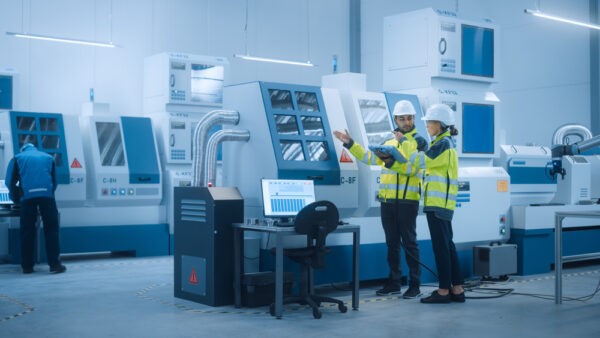Equipment Monitors: Why They’re Not All the Same

Equipment monitors are ubiquitous in the manufacturing environment. From computer screens and factory floor displays to complex human-machine interfaces (HMIs) and controllers, screens are integral to modern production processes. But not all screens are the same.
Understanding the differences among liquid-crystal display (LCD), light-emitting diode (LED), and cathode-ray tube (CRT) monitors is key in determining why they malfunction and how each should be serviced. Whether you’re troubleshooting screens or investing in new equipment, knowing the specifics of these display technologies is essential.
Screen types
LCD monitors use liquid crystals to block or allow light to pass through, creating an image on the screen. They are thinner and lighter than other monitors and consume less power. But LCD monitors can have problems with response time, which can cause ghosting or blurring in fast-moving images.
An LED monitor is a type of LCD monitor that uses light-emitting diodes instead of a backlight to produce an image. It offers several advantages over traditional LCD monitors, including better energy efficiency, improved black levels, and wider viewing angles.
CRT is an older technology that uses an electron beam to generate an image on the screen. CRT monitors are typically larger and heavier than LCD and LED monitors, but they can also produce better image quality, especially for fast-moving images.
With these functional differences in mind, it’s easier to understand the most common issues that can befall them.

LCD monitor problems
LCDs are prone to dead pixels — when pixels become permanently stuck on or off — resulting in a black or white dot on the screen. Another common problem is backlight failure, which causes the screen to become dim or dark. LCD monitors can also experience response time issues.
LED monitor issues
LEDs can suffer from issues similar to their LCD cousins, including backlight failure. Another frequent problem is image retention — a temporary screen discoloration occurring when the same image is displayed for a long period of time. LED monitors can also exhibit color banding. This type of image distortion can cause smooth gradients to appear jagged or uneven.
CRT monitor concerns
A common concern for CRT monitors is screen burn-in, which occurs when the same image is displayed on the screen for a long time, causing it to be permanently etched into the screen. Another widespread problem is geometric distortion. This issue can lead to straight lines appearing curved or bent and can be especially noticeable when displaying text or geometric shapes. CRT monitors can also have convergence errors, resulting in fuzzy or blurry images.
Understand the tech before you seek repair
Equipment monitors have their place within the factory environment. When their function becomes threatened by a malfunctioning display, it’s important to know what type of screen you’re dealing with before seeking a solution. LCD, LED, and CRT monitors can all develop unique problems, and the decision to repair or replace often comes down to the type of screen.
